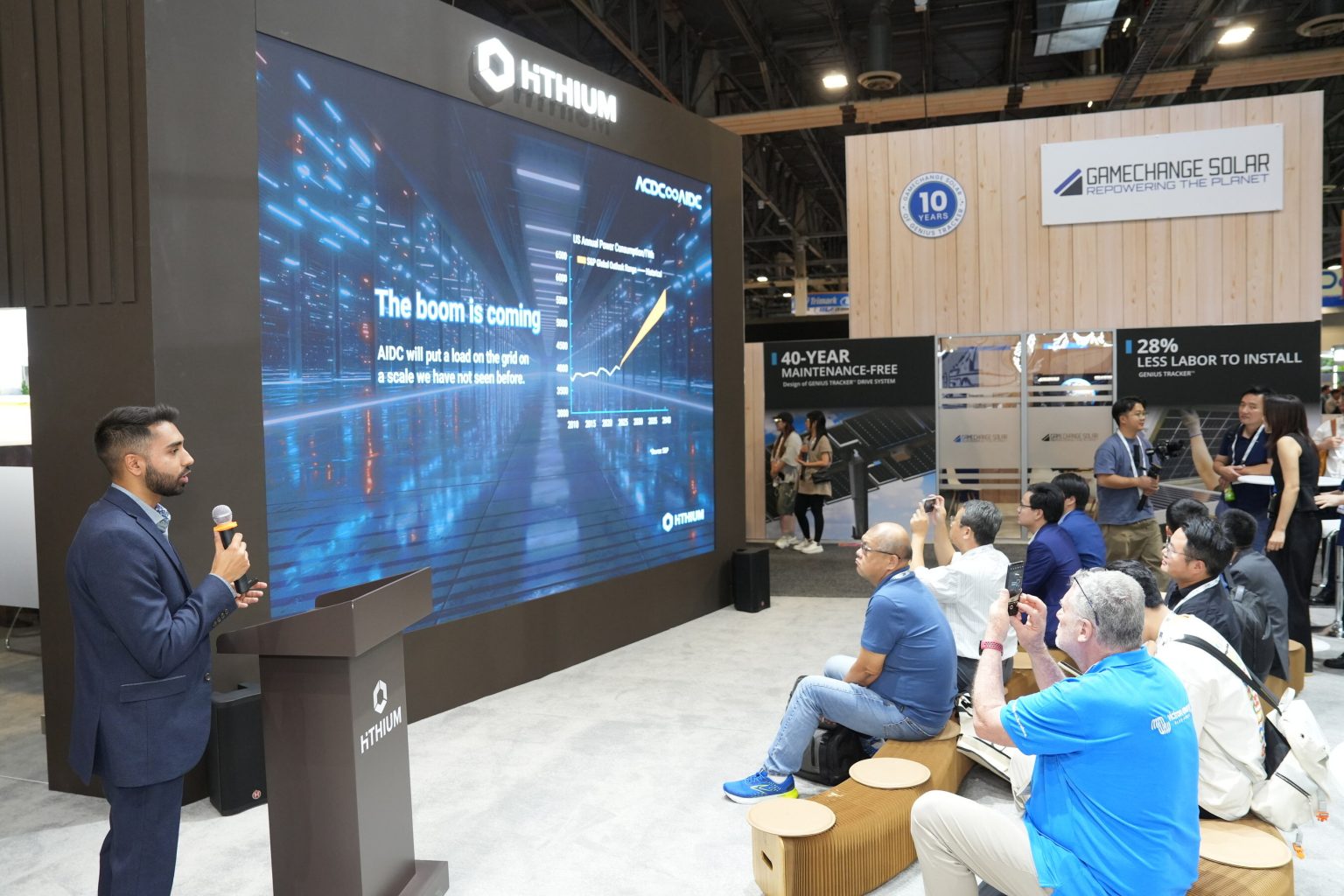AI-driven data centers are emerging as one of the fastest-growing loads on global electricity systems, with some forecasts warning that U.S. facilities alone could add up to 50 GW of demand by 2030—equivalent to the consumption of every household in California.
Against this backdrop, Chinese storage specialist Hithium has launched a dedicated portfolio for artificial intelligence data centers (AIDC), unveiled this week at RE+ 2025 in Anaheim.
The package includes the ∞Power 6.25 MWh 8-hour lithium-ion battery energy storage system (BESS), the ∞Power N2.28 MWh 1-hour sodium-ion BESS, and a lifetime assessment model tailored to the extreme cycling and millisecond-level load fluctuations of AI workloads. Hithium positions the portfolio as a way to reduce reliance on fossil backup, stabilize renewable input, and manage costs for an industry under mounting scrutiny over its energy footprint.
Unlike conventional data centers, AI clusters demand high, continuous power for training large language models while also experiencing sudden surges during inference processes. Most grid-connected BESS solutions are designed either for long-duration smoothing or for short-duration peak shaving—not both simultaneously. Hithium’s approach combines an 8-hour lithium system to handle baseline renewable integration with a 1-hour sodium-ion system built for sharp fluctuations.
The sodium-ion module, built on the company’s ∞Cell N162Ah platform, is rated for 20,000 cycles, a key metric given the intense cycling of AI applications. By pairing technologies, operators can reduce auxiliary consumption and improve round-trip efficiency while securing stable performance under millisecond-level volatility.
One of the core selling points is the reduction in levelized cost of electricity (LCOE). By extending cycle life and providing scenario-specific performance, the tailored system can lower replacement costs and cut curtailment of variable renewable energy. For data center operators facing rising scrutiny from utilities and regulators, such solutions are becoming essential. Reports from grid operators including PJM and ERCOT highlight that delays in power interconnection and grid stress are already constraining new data center capacity in the U.S.
Stay updated on the latest in energy! Follow us on LinkedIn, Facebook, and X for real-time news and insights. Don’t miss out on exclusive interviews and webinars—subscribe to our YouTube channel today! Join our community and be part of the conversation shaping the future of energy.





